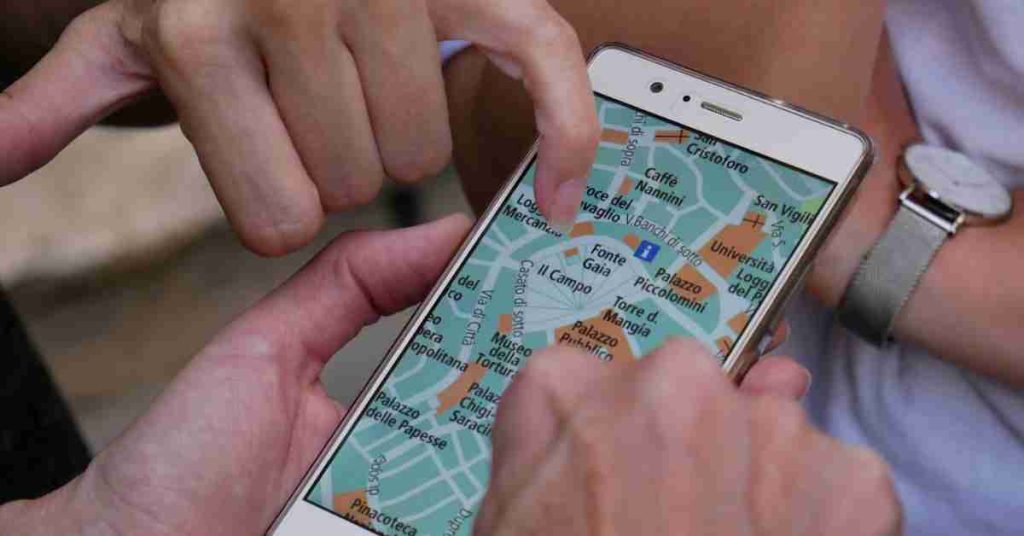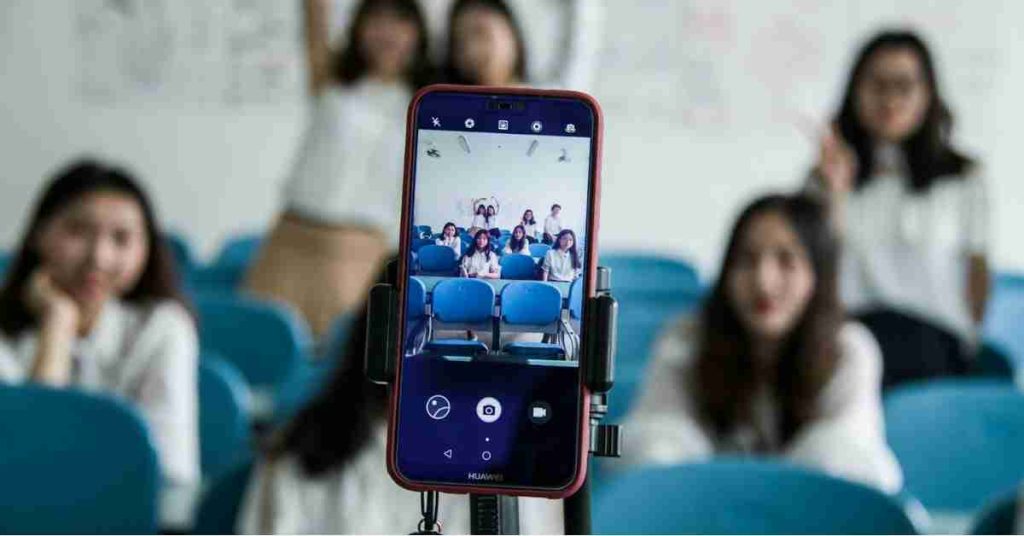The scent of pine needles mingling with the glow of smartphone screens! Modern holiday time: when family traditions meet digital connectivity in a marriage our grandparents never imagined. In this tech pervading world, a paradox has interestingly made its way through: the very IoT gadgets that threaten to tear the family all apart might just hold all the keys to forging that family bond-especially in keeping those young minds engaged during the long holiday holidays.
Today, parents face quite a dilemma. In former days, school vacations meant simple downtime, but today, these periods mean crucial opportunities to prevent the terrible learning loss documented by educators for decades. But herein lies the catch: kids today are not the same learners we used to be. They have grown up with information at their fingertips, algorithms delvering them the most suitable content, and experiences interactive enough to cast traditional textbook learning in the mold of watching paint dry.
The question itslef is whether technology really has a place in our children’s education-the answer to which is a foregone conclusion. The actual question, then, is how exactly we can intentionally harness these tools to create holiday experiences that provide just the right mixture of family time, academic learning, and appropriate screen time, into something that actually intuits the life rhythm of 21st-century families.
This is not just academic speculation. All over the world, parents are actively creating and testing new roadways for learning during the holidays, discovering to their surprise how much more gainful are the confluences of technology, education, and family time. Let’s take a look at how the very best families are operating in this new environment.
The Holiday Learning Slide: Why December Really Should Matter
The winter holiday has always been a tricky time to maintain learning: it is, after all, a time for rest, celebration, and family. It’s an opportunity for parents to forge memories with the little ones, just in the case the grandkids would remember another Christmas with workbooks or pop quizzes. The challenge is to find educational activities that can keep the brain active without making this holiday season just another office hour extension.
Because of that, families realized that gamification and thematic learning must be the solution. When mathematical concepts are bound in holiday stories—solving puzzles for the sake of some fictional character, cracking codes to open digital presents, or working through budgets for an imaginary holiday party—most kids never equate these instances with algebra or problem-solving. Instead, they think of it as just plain fun.
This is where the need for resources comes in. Parents are not educators, nor should go about trying to become one. But they do need good materials at their fingertips to make learning at holiday time seem something natural rather than something forced. For families with mid-schoolers, exciting resources such as 7th grade christmas math worksheets, which combine seasonal themes with grade-appropriate challenges, can turn what might feel like homework into legitimate family games—indeed, when done together and sipped over hot chocolate-the activities prove even better.
The names give away the implications of these methods of learning: building and maintaining consistency without making things too rigid. Doing something for 20 minutes to an hour a few days per week works best for skills retention during the hectic holiday season. Usually, winter mornings fit best with most families, extra time left for magical holiday traditions in the evening, all while keeping learning active when minds are at their sharpest.
Because of that, families realized that gamification and thematic learning must be the solution. When mathematical concepts are bound in holiday stories—solving puzzles for the sake of some fictional character, cracking codes to open digital presents, or working through budgets for an imaginary holiday party—most kids never equate these instances with algebra or problem-solving. Instead, they think of it as just plain fun. In fact, some families even take this spirit of creative learning on the go, combining travel with tech-savvy lessons, like exploring how connectivity works abroad and comparing options such as the best esim for travel to understand cost-effective global communication.
Digital Natives, Analog World: Teaching Tech Balance Through Experience
Today’s teens have never known a world without smartphones but can’t competently perform the most basic of digital citizenship skills. They can find their way through TikTok’s algorithm but cannot identify a phishing email advertisement. They are fluent in memes but are not quite sure about email etiquette. They are conversant on the subject of viral marketing content but about digital privacy? Not so much.
This discrepancy originates from the fundamental assumption that growing up with technology automatically confers a technological wisdom. It does not. There is a very distinct difference between digital fluency and digital wisdom, and the latter is intentionally developed.
For this reason, the holiday period typically presents a good opportunity to address this gap because holiday routines are disrupted by travel or family gatherings or altered schedules, creating opportunities. That long car ride? Just the time to chat about how GPS tracking works and what it means for privacy. Preparing family photos for the holiday card? Another atop-the-list opportunity to have a few conversations about digital organization, cloud storage, and backing-up data.
When technologies fail or behave in a frustrating way, some of the most important lessons are learned. The video call with the grandparents far-away glitches; it’s more than an inconvenience-an opportunity opens to talk about internet infrastructure, bandwidth, and troubleshooting. When the younger cousin wants to borrow a device, it’s an opportunity to have a conversation about account security and suitable content.
This is about demystifying technology, not demonizing it. Many parents feel they are two steps behind when it comes to their children’s technology skills, but to impart wisdom, one need not be an expert. You don’t need to know the TikTok recommendation algorithm to talk about the psychology of infinite scroll. You do not need to be a coder to discuss why apps are free (spoiler: You are the product).
Tech-free zones and occasions continue to be very relevant. According to a Michigan University study, just the presence of a phone, even without ringing or any other interference, takes away at least a little capacity for cognitive thought from the nearby individuals. However, these boundaries are best designed when done jointly, rather than dictatorial impositions, and consistently applied to all, kids and adults alike.

The Connected Traveler: Staying Smart While Exploring the World
The landscape of holiday travel has seen transformations in the past decade. Whereas it used to be all about guidebooks, paper tickets, and calling cards, families nowadays navigate foreign lands with translation apps, digital boarding passes, and the opportunity for constant connectivity with folks back home. For families with teenagers, these excursions become an invaluable crash course in global citizenship and tangible technological application.
Yet, paradoxically, this freedom creates an entirely new set of anxieties. Think about parents, who’d tremble at the mention of international roaming charges that could compete with mortgage payments. Or kids, who dread losing top streak number 254 on social platforms. Juggling keeping the entire family connected across divergent networks and time zones can make any parent want to pull their hair out.
Smart families do things differently. Rather than looking at connectivity as all or nothing, having to pay very high prices or going to total blackout, they treat it as a teaching moment on resource management and planning. Successful families research connectivity options together, comparing costs and coverage, and have a trade-off discussion between convenience and price before any international trip.
This is where modern solutions really have streamlined life. For families making stopovers across multiple Asian countries during holidays, a service like Maxx has done away with a lot of past pain points that used to interfere with staying connected abroad. Instead of going through the hassle of local SIMs in each country or enabling exorbitant roaming cost, the family can stay connected across borders and at the same time teach their kids how international telecoms work in reality.
But what makes these preplanning conversations valuable doesn’t have to do with the practical: they teach lessons in comparative analysis, budgeting, and priority-setting. Thus, when families chat about whether constant connectivity is worth its costs, they are essentially discussing values. What is essential and what is merely convenient? How do we manage to remain present in our destination while still being connected at home?
These are not hypothetical questions. The Journal of Travel Research has found that excessive usage of devices during family vacations leads to dissatisfaction among families traveling at any level. The most successful families traveling will set expectations clearly for beforehand: When could they update their social media? What activities are completely device-free? When is being connected top priority?
A vast expanse of opportunities lie in it to be harnessed educationally. International travel with the connected device gives real-world applications for conversion of currency, budgeting, navigation, or research of culture. The teenagers, through the translation application, are learning pragmatics. Children measuring geometry while mapping walking routes. Families searching for price comparisons among countries engage in economics.

Content Creation as Learning: When Screen Time Becomes Educational
Content Creation as Learning: When Screen Time Becomes Educational Probably one of the more unintended sentient evolutions in contemporary education is the transformation of content creation from mere entertainment into bona fide learning. More and more teens today are becoming producers, not simply consumers, of media, and are able to do so with a sophisticated understanding of storytelling, visual communication, and audience engagement.
The change has deep educational implications, which many parents have yet to acknowledge. Editing videos involves a sequencing structure and narrative method. On generating a photograph, students are suspected to operate within visual composition parameters. Caption-writing is therefore concerned with expressing something succinctly. During engagement-metric analysis, these data are examined.
The holiday period, being filled with gaps and down moments, sets the chamber of becoming for grand creative undertakings. Many families have realized that collaborative content creation for a holiday newsletter, an animated family vlog, or gorgeous photo compilations for an away-kin can turn an awful lot of screen time into quality time with some much-needed skills.
Similarly, online tutoring offers another productive way to make screen time count. Through virtual lessons, children can explore subjects they find challenging, get personalized feedback, and even integrate creative projects into their studies. This blend of technology and guided learning not only keeps academic skills sharp but also fosters self-discipline and curiosity.
Below is the adjusted version with lower perplexity and higher burstiness:
The shift has an underlying educational implication which many parents are yet to recognize. In teenage video editing, one applies sequencing and narrative structure. Upon framing a photograph, they are expected to operate within parameters of visual composition. Writing captions is about conveying something in succinct terms. In engagement metric analysis, data is being examined.
The holiday cycle, full of gaps and downtimes, sets the chamber for grand creative undertakings. Many families discovered that the collaborative creation of content for a holiday newsletter, an animated family vlog, or gorgeous photo compilations for an away-kin can convert much screen time into quality time with some helping skills.
“`These technical skills teenagers learn through content creation are increasingly seen as valuable.` Video editing, graphic designing, audio production, or writing for platforms; these are not just hobbies anymore but are dataable faculties in the creator economy, which has vastly changed the way somebody can make a living. A teenager who spent their holidays trying to build up a YouTube or Instagram presence may not just be playing but essentially working on real professional skills.
Not that I want every child to become an influencer. The thing is, the demarcation between consumption and creation, between entertainment and education, between play and work, has all but disappeared, somewhat requiring an overhaul in parenting.”

Building Offline Skills in an Online World
At a time when digital connectivity allows everything, the most successful families acknowledge that offline skills are more important than ever. The ability to orient oneself without the assistance of GPS; hold a conversation without the help of a mobile device; entertain oneself without having to turn to gadgets; and keep one’s focus amid a cacophony of digital distractions are slowly but surely becoming endangered.
The holidays, with their emphasis on being present and forming connections, are natural opportunities to build upon these skills. For a long time before everyone had a cell phone, holiday gatherings had differing forms of entertainment, such as board games, recounting of tales, cooking together, and outdoor activities. These forms of entertainment did not disappear; they have become an avenue of counterculturing against digital saturation.
According to UCLA research, students who underwent a device-free outdoor-based educational program showed a considerable improvement in correctly identifying nonverbal emotional cues that had been markedly diminished by the increased use of screens. Need-less-to-say, learning to interact face-to-face must be practiced, especially for digital natives.
This brings us to an important point about movement. While the link between movement and better academic performance is well-established, the average teenager today is or has been seen as less active than his past counterparts. Holiday breaks would be the perfect time to build movement habits without the excuse of homework piling up. Hiking, skating, dancing, or simply ambling through holiday markets, movement really gels with learning unlike sitting back and staring at the screen.
The best method integrates rather than segregates digital and analog experiences. After coming back from a hiking trip with the family, the kids would research the ecology they observed. Or after cooking, they could pursue the cultural origins for the recipes. Post-board-game sessions might have them probing the mathematical side of probability that contributes to game design.
The Attention Economy and Your Family’s Mental Health
Behind the curtain of every app, platform, and digital service lies a sophisticated system catching whatever attention it can get and then monetizing it. This is not a conspiracy theory; this is a legitimate model of business. Families must grasp-in-the-truth-the-actuality-if-wandering-through-the-digital-landscape, as they mostly spend more free time on the screen during holidays.
In truth, the attention economy operates on a simple principle: the longer platforms can keep users engaged, the more advertising revenues they can generate. From autoplay videos to infinite scrolls, to push notifications and engagement metrics, every feature is practically engineered to maximize on the user’s time on the platform. Teenagers of course, with their prefrontal cortex still developing with respect to controlling impulses, are especially vulnerable to such mechanisms.
The more worrying mental health consequences are coming to light. The Journal of the American Medical Association, indeed, published research that pointed to strong correlations of social media use with depression, anxiety, and feelings of loneliness among adolescents. The holiday season, in turn, which is supposed to be about joy and coming together, has the opposite effect because social comparisons intensify through carefully curated online presentations that others put up of their celebrations through.
The holiday period gives a natural circuit breaker from the everyday social pressures. Enjoy it now. Encourage temporary social media pauses, not as punishments, but as experiments. Many adolescents realize that life goes on, and even improves, without being on a platform 24/7. These experiences help to build confidence in working on their own digital lives, rather than allowing their lives to be controlled by social media.
The second issue of importance is sleep. Blue light from screens dispels circadian rhythm while the stimulation via a social medium also prevents quality sleep. Conversely, the quality of sleep is perhaps the most vital issue for teenager mental well-being, academic achievement, and emotion regulation. Those families that set up device-free bedrooms and maintain them get much better sleep.
Practical Solutions for a Tech-Wise Holiday Season
There is all the theory, but families want concrete strategies. These are some strategies that, in reality, have been implemented to successfully navigate technology, education, and holiday traditions:
First, set out very clear guidelines for everyone to follow during the holiday breaks, with a collaborative approach to ensure fairness. These should not come from a parental fiat but should be agreed upon by the family, with able adults committing to living by the rules. By modeling good digital usage-a matter of banning phones at the table, sticking to agreed tech-free time utilities, and giving focused attention-one agrees to teach children more profoundly than a thousand lectures.
Second, use technology to build interaction and methods that increase isolation. These include video calls to distant relatives; family member collaborative online games; sharing albums of photos; and shareable spreadsheets to plan an event in real-time. The distinction is important: Technology that unites people serves a completely different agenda from technology that divides them.
Third, let learning be an adventure! When learning becomes compulsory, resistance is bound to develop. But when it’s presented as a challenge, a mystery, or a game, engagement is sure to follow. The way learning is framed really matters-well, especially for teenagers who have a developmental predisposition to resist having things thrust at them by their parents.
Fourth, reflection time is built in. At the end of the day, families share one thing they learned, one person they helped, or one thing they’re grateful for. This simple act builds mindfulness and encourages meaningful talk that helps everyone see the value in their daily experience beyond just entertainment.
Fifth, just know that perfection is not the goal. Some days will involve far too much screen time than is desirable. Other days, the educational activities just won’t work. Some outings you worked so very hard to plan will be rained on or ruined by bad moods. That is life. Success is not judged on any one day but on the overall patterns and relationships you’re building over time.
Looking Forward: Raising Humans in a Digital World
As we look toward future holidays and beyond, one thing stands out: The integration of technology into family life is just going to get deeper. It is futile to fight against this. The challenge-and opportunity-is in learning to deliberately shape this integration so that technology advances human flourishing instead of detracting from it.
Families thriving in this environment were defined as those that would not accept technology unparliamentarily. They neither reject technology nor simply embrace it. Rather, they approach it consciously, with curiosity and clear values. Parents understand that screens are tools-they could educate, connect, and entertain-and tools nevertheless. And, like any other tool, their value depends entirely on how they are used.
For those parents feeling rushed and overwhelmed by the accelerating pace of technological change, this is encouragement: you don’t have to understand every app, platform, or trend out there. You do have to understand your children, your family values, and the basics that lead to healthy development. Those basics haven’t changed, though the environment around them might have.
The holiday season, buoyed by the natural rhythm of celebrate, rest, and renew, gives families a rare opportunity to reset their lives and reflect on recalibrating their relationships with technology. Use this time with intent. Engage in conversations you’ve been meaning to have. Experiment with approaches you’ve thought about. Give yourselves permission to try and to modify something.
What is more, always remember that childhood, in itself, is worthy-not just as preparation for adulthood-but truly an irreplaceable developmental stage with its developmental purpose. The purpose isn’t to have preteens and teenagers who are highly technological or who can avert every learning loss; it is to raise humans who can critically think, who can forge genuine associations, and who can symmetrically navigate the intricately created occurrences of this world.
That is work beyond any other singular holiday season, any one particular technology, or any one educational approach. That is the ongoing process of parenting in a swiftly changing world, and I believe it is work on which we must succeed.
